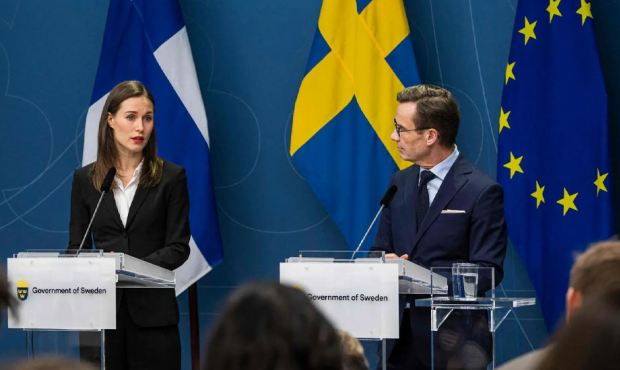Sweden’s and Finland’s applications to join NATO could be separated, alliance’s leader suggests
The chief of the North Atlantic Treaty Organization on Tuesday raised the possibility that the applications of Sweden and Finland to join the alliance might be considered separately, appearing to open the door to a split decision on membership

The chief of the North Atlantic Treaty Organization on Tuesday raised the possibility that the applications of Sweden and Finland to join the alliance might be considered separately, appearing to open the door to a split decision on membership.
The long-held thinking at NATO has been that the Nordic neighbors should join at the same time. The comments from Jens Stoltenberg, NATO’s secretary general, caused some immediate concern among member states because they appeared to lessen the alliance’s leverage to convince Turkey’s president, Recep Tayyip Erdogan, to drop objections to Sweden’s bid to join.
The two Nordic nations, which abandoned decades of nonalignment and applied to join the 30-nation alliance in the wake of Russia’s full-scale invasion of Ukraine, have strong backing from most member states, but NATO requires a consensus on approving membership.
Mr. Erdogan has indicated he is willing to ratify Finland’s NATO membership, but he has demanded that Sweden crack down on Kurdish refugee groups — members of which he considers to be terrorists — and to extradite a number of Kurds living in Sweden, some of whom are political refugees.
“The main question is not whether Finland and Sweden are ratified together,” Mr. Stoltenberg told reporters before a meeting of NATO defense ministers. “The main question is that they are both ratified as full members as soon as possible.”
Mr. Stoltenberg said that he is “confident that both will be full members and are working hard to get both ratified as soon as possible.”
Earlier this month, Turkey’s foreign minister, Mevlut Cavusoglu, said Ankara has fewer problems with Finland joining.
Mr. Stoltenberg has held three-way talks with Sweden, Finland and Turkey to work out differences and satisfy Mr. Erdogan, who is expected to face strong opposition in elections scheduled for May. He and his government have also been subject to criticism over their handling of the massive earthquake that hit Turkey and northwest Syria, with charges of a slow response and of political corruption in allowing building codes to be ignored.
Earlier Tuesday, Mr. Stoltenberg signed a book of condolences at the offices of the Turkish delegation at NATO.
In his comments, Mr. Stoltenberg said that it was up to the military alliance to decide whether to accept one country only or the Nordic duo together — but in an organization that works by consensus, one NATO ambassador said, that leaves the decision to Mr. Erdogan. Viktor Orban, the prime minister of Hungary, has dragged his feet during the process, but has said that his Parliament will vote to ratify both bids.
Another NATO ambassador suggested that Mr. Stoltenberg was simply reflecting the reality of the situation now.
The hope at NATO has been for the two countries to join together after the Turkish elections and before, or at, the NATO summit meeting in mid-July in Vilnius, Lithuania. If he is re-elected, negotiations with Mr. Erdogan may even continue at the summit and President Biden may have to get personally involved.
So far, Finland has stood by Sweden and insisted they should join NATO’s ranks together. But the Finnish Parliament, which faces elections in April, is working on legislation needed to join NATO before then. If passed, as expected, Finland would be able to join NATO as soon as Turkey and Hungary ratify its membership, no matter what happens with Sweden.
Johanna Lemola contributed reporting from Helsinki / Steven Erlanger / The New York Times
